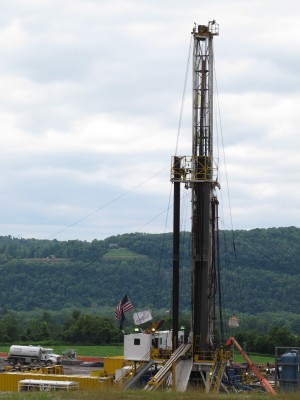Charting Horizontal Wells’ Production Impact
-
Scott Detrow

Scott Detrow / StateImpact Pennsylvania
A Bradford County drilling rig
How has horizontal drilling changed Pennsylvania’s energy landscape? New graphics from the federal Energy Information Administration provide a clear answer.
Drillers have been extracting natural gas from below Pennsylvania for decades. But in 2007, a major change started taking place: instead of drilling wells straight into the ground, energy extractors began drilling horizontally. That’s because they were running their bits through the narrow – but gas-packed – Marcellus Shale formation.
Just a small sliver of the new wells drilled in Pennsylvania were horizontal in 2007. That percentage gradually expanded: by 2010, more than half of new wells were drilling sideways, and by 2011, horizontal wells made up more than three quarters of new sites:

Energy Information Administration
New wells drilled in Pennsylvania: 2005-2011
Horizontal wells produce much more gas than their vertical counterparts. The following chart shows Pennsylvania’s daily
gas production has skyrocketed to nearly 3,500 million cubic feet a day.The number of new wells, shown above, has stayed relatively steady, at 2,000 to 2,500 a year. But as horizontal wells replace vertical wells, more and more gas is being extracted.

EIA
Pennsylvania’s Natural Gas Production: 2005-2011
The EIA even put together a time-lapse video showing how horizontal wells have come to dominate Pennsylvania’s energy landscape. Watch how more and more horizontal wells start popping up, beginning in early 2008.
















